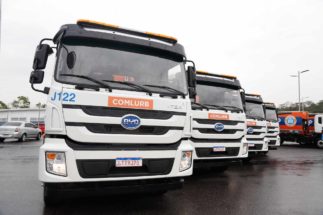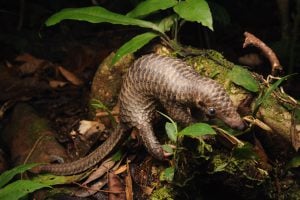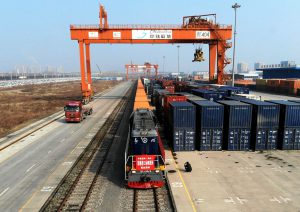For seven generations, Sandra Amorim’s family has lived on the same patch of land in the eastern Brazilian Amazon. Where once there was just rainforest, now she is surrounded by the sounds and sights of industrial development.
“Whichever way you turn, there are difficulties,” she says. The expansion of a nearby port in Barcarena, a municipality in the north of Pará state across the water from the city of Belém, has clashed with many traditional communities. With a new Chinese-financed railway expected to boost development, many fear they will lose out further.
Barcarena is home to the Vila do Conde port that will be the final stop on the Pará Railway, a stretch of tracks running 492km up from the city of Marabá. Late last year, China Communications Construction Company (CCCC) signed a statement of intent with Pará’s government to invest R$7 billion (US$1.6 billion) in the railway, the largest foreign infrastructure investment in Brazil. Construction will begin next year.

The bulk of the railroad’s cargo will be iron ore, much of it destined for China. Eventually, the railway will extend further south to the city of Santana do Araguaia, and link to a country-wide network of tracks that run to Rio Grande do Sul in the far south. Minerals, grains and cattle will be carted in and shipped to the world from the port’s strategic position near the mouth of the Amazon.
Pará’s government says the railway will further stimulate its economy, bringing jobs and raising income. It will lower transportation costs and increase productivity in mining operations, including at Carajás, where Brazilian mining giant Vale digs some 120 million tonnes of metal per year from the world largest open iron ore pit. New metal processing facilities will generate higher profits still. CCCC and Vale are also investing R$1.8bn (US$410 million) in a steel rolling mill in Marabá.
Yet for residents of Barcarena, the railway will exacerbate conflict in a place where the petrol stations, power lines, and workers’ houses that have swelled the Vila do Conde industrial complex to 4 million m2 since its establishment in the 1980s. Rainforests have made way.
Barcarena’s troubled landscape
Pará already bears the scars of industrial development. In 2015, a freighter bound for Venezuela capsized on leaving the port, spilling hundreds of gallons of fuel and leaving hundreds of dying cattle on Barcarena’s beaches to rot in the sun. In 2018, heavy rains led to a chemical spill at Alunorte, the world’s largest aluminium refinery, owned by Norwegian metals company Norsk Hydro, causing a toxic flood. Norsk Hydro denied responsibility for the spill and Alunorte recently resumed full production.
But Barcarena’s communities don’t eat local fish anymore and only drink bottled water. Faced with a changing world and pressure to leave, many chose to take their own lives. Meanwhile, every year tens of thousands of trucks move tirelessly along potholed roads leading into the port, swirling up clouds of dust from the reddish ground into the hot, thick air.
At the entrance to the Africa quilombo (Afro-descendant community settlements), a young boy standing on a small wooden bridge fishes in a stream. The railroad tracks will cross through neighbouring quilombos, but Africa residents say they will be still be affected.
Does water respect ten kilometre limits? Does air?
Barcarena is 18km away but its expanding footprint is already palpable. A nearby water processing plant that recently arrived extracts water from the same streams, known as igarapés, and channels it back out to the port. More fuel stations, powerlines and hospitals will be built nearby, all needing water and land.
With so many strange people passing through, security is a major concern, according to resident Magno Cardoso. The idea that huge infrastructure projects will benefit everyone is simply not true, he says.
“A minority will benefit – landowners, people in agribusiness. For the remaining communities, it’s the loss of rivers, a public dispute, and increasing levels of crime and marginalisation.”
Pará Railway: Splitting the state
The railroad will pass through 23 municipalities, crossing through or close to several quilombo communities and smallholder farming plots, and two indigenous villages. Pará’s government has said the line will be adjusted to affect people as little as possible. People living ten kilometres from the tracks will receive compensation payments.
But nature doesn’t respect the arbitrary limits used in impact plans, says Johny Giffoni, a public defense lawyer in Pará, and those lying outside them will still feel the impacts: “Does water respect ten kilometre [limits]? Does air respect ten kilometres? Does contaminated land respect ten kilometres?”
Giffoni also says that local communities weren’t consulted about the railway before the State government announced the plans.
Researchers say the railway will increase deforestation by opening up previously inaccessible land. “The tendency is that where you have embarking points, you have expanding deforestation,” says Paulo Barreto, a researcher at Imazon, an environmental NGO in Belém.
9%
the share of Amazon deforestation that mining is responsible for
Further forest loss will result from increased mining activities, which can triple deforestation rates across the Amazon basin, according to a 2018 study by Laura Sonter, an environmental scientist at Australia’s University of Queensland. Deforestation stretched up to 70km outside the confines of major projects, due to added infrastructure, urban expansion, and mineral processing operations. Between 2005 and 2015, mining-induced deforestation accounted for 9% of total Amazon deforestation.
Pará holds 3% of the world’s deposits of iron ore, copper, bauxite, gold, and other minerals, according to the state government. The Pará Railroad dovetails with plans to boost mining, which accounts for a quarter of the state’s GDP, and over 90% of exports. In 2010, there were 171 open mines. By the end of the decade, there will be 230. The number of mining cities will grow from 55 to 80. By 2030, mining is projected to bring in US$30 billion.
According to Sonter, regional biodiversity would be also affected by deforestation, forest fragmentation and the risk of invasive species: “Environmental impact assessments often underestimate the negative impacts of mining on biodiversity, purely because they don’t examine the indirect impacts that emerge at broader scales.”
Agricultural supply lines
Beyond iron ore, lowering transport costs will fuel the continued expansion of the beef industry, one of the main drivers of Brazilian Amazonian deforestation, says Rebecca Ray, a Post-Doctoral Research Fellow at Boston University’s Global Development Policy Center.
China’s demand for beef is surging and it is looking to import more from Brazil.
the Brazilian government is making a choice of development strategy
Once the railway is connected to adjacent networks, soy will also become cheaper and faster to draw up through the country. Chinese demand for Brazilian soy has “skyrocketed” in recent years, Ray adds, especially since the onset of trade tensions with the US. Between 2013 and 2018, Brazilian exports of soy to China nearly doubled. Shipments of beef almost tripled.
“Traditional agro-industrial and mining interests will benefit, while the communities who have suffered from the environmental impacts of those interests will suffer more,” Ray says.
According to Edna Castro, a sociologist at the Federal University of Pará, the railway fits into a wider dynamic of development happening in the state and elsewhere in the Amazon. Over thirty new ports are planned, along with works to support water transportation, and new power lines. Cattle ranching will migrate northwards, she says. Once forest is cleared and the land is no longer suitable for grazing, it make will way for soy, transforming Pará into major producer in a few years’ time.
CCCC’s investment in strengthening food and other raw material supply lines has caused controversy in a number of international projects.
2009
the year the World Bank blacklisted CCCC
The company has been linked with a series conflicts in the past, including in Sri Lanka, where local communities were hit by dredging, destruction of coral reefs and eroded land during construction of the Port City Colombo development. In 2009, the World Bank blacklisted CCCC after alleged fraudulent bidding practices on a highway in the Philippines.
Ray doesn’t think the blame for any social and environmental fallout should fall squarely on the Chinese. Her research suggests Chinese investors like CCCC adhere to host country environmental and social regulations in attempts to avoid diplomatic disputes.
“In pursuing this kind of investment, the Brazilian government is making a choice of development strategy, having accepted the environmental and social consequences of that choice,” she says.
Amorim often glances at her fence. So many new faces have arrived in the area, it’s hard to know who might be coming, she says. Police regularly stop by her house after she received death threats. She has been assaulted near her home three times and laments the rising crime, prostitution and murder that the influx of outsiders have brought to Barcarena. But, she shrugs; “That’s progress, isn’t it?”


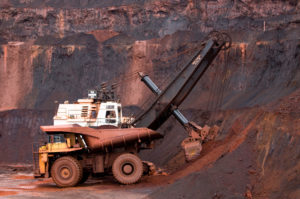
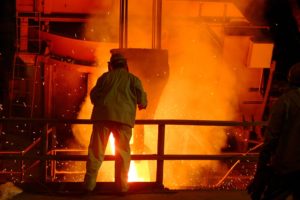
![Farmers carry a sack of harvested clover to feed their animals, near Khuspur village, Punjab Province, Pakistan [image: Alamy]](https://dialogue.earth/content/uploads/2020/03/E62ENH-300x200.jpg)
